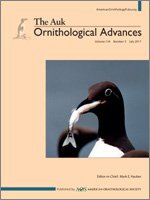Migration is a behavioral strategy to access resources that change across a landscape. Animals must ultimately interpret cues to properly time movements that match changing resource quality. Many animals do this by responding primarily to indirect indicators of resource quality such as an internal biological clock or photoperiod. Others are heavily dependent on more direct indicators such as weather or plant phenology. Timing of movement also can be modified by factors specific to individuals. We used time-to-event models for Greater Sage-Grouse (Centrocercus urophasianus) to investigate whether an altitudinal avian migrant was influenced by direct indicators of resource quality when timing migration, and whether timing was influenced by individual characteristics, during the spring (winter to breeding range), summer (breeding to summer range), and fall (summer to winter range) transitional seasons. Greater Sage-Grouse interpreted direct indicators of resource quality, especially temperature, when timing movements between seasonal ranges. Timing was also dependent on individual characteristics including location, reproductive status, and habitat use. After we identified which migration cues were important, we evaluated if migratory and nonmigratory individuals were experiencing similar environmental conditions, which may partly explain why there are different behaviors in a partially migrant population. For the summer and fall transitions, migratory grouse experienced more stimulatory migration cues because of differences in elevation of seasonal ranges. Migratory birds were likely avoiding more rapid plant desiccation in warmer breeding ranges and avoiding higher snow accumulation in colder summer ranges with more precipitation. Altitudinal migrants are likely to use direct indicator cues because they have great utility when migration distances are relatively short. In addition, landscapes with altitudinal migrants have sharp environmental gradients creating conditions conducive for partially migratory behavior in a population.
How to translate text using browser tools
24 May 2017
Environmental cues used by Greater Sage-Grouse to initiate altitudinal migration
Aaron C. Pratt,
Kurt T. Smith,
Jeffrey L. Beck

The Auk
Vol. 134 • No. 3
July 2017
Vol. 134 • No. 3
July 2017
Centrocercus urophasianus
direct resource indicators
partial migration
timing cues




